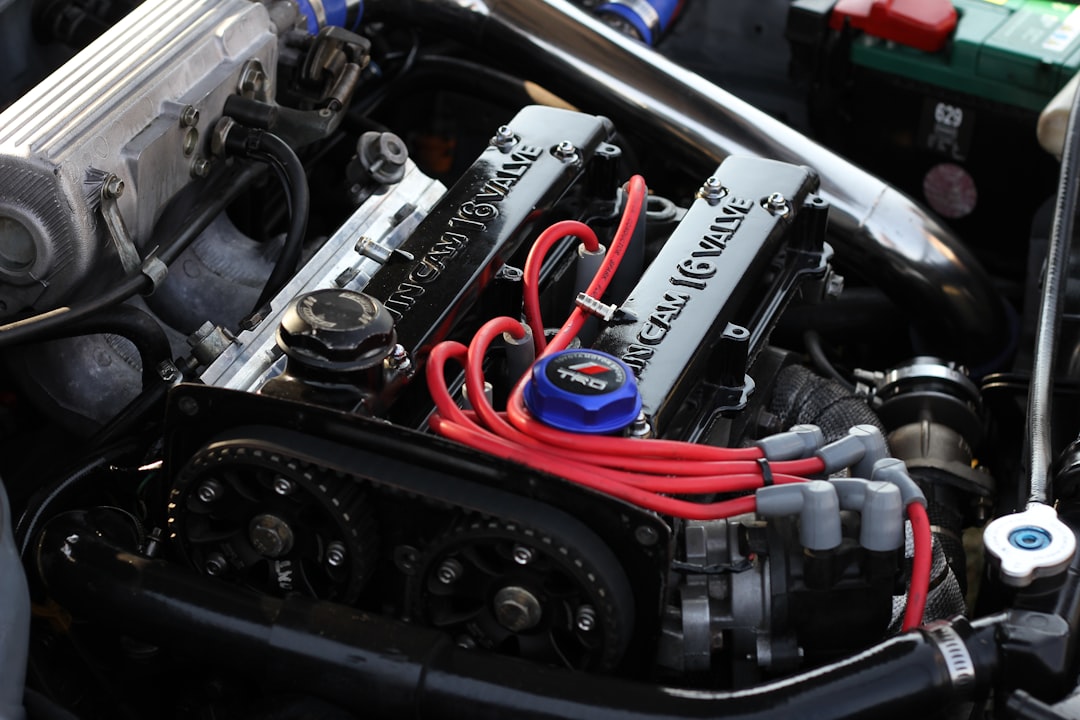What is it about?
Hybrid Electric Vehicles (HEVs) can be considered as a potential technology to promote the change from conventional mobility to e-mobility. However, the real benefits in terms of CO2 emissions depend on a great extent on their mode of use, vehicle design and electricity source. On the other hand, in the last few years, advanced combustion modes as Reactivity Controlled Compression Ignition (RCCI) showed great advantages in terms of NOx and soot emissions reduction. This paper has the purpose of assessing, through numerical simulations fed with experimental results, the potential of different hybrid vehicles when used together with a low temperature combustion mode. In particular, the dual-fuel Mild (MHEV), Full (FHEV) and Plug-in (PHEV) hybrid electric vehicles are tested and compared to the original equipment manufacturer (OEM) and the conventional dual-fuel powertrain, both no-Hybrid vehicles. The powertrains are optimized to meet the current European homologation legislation Worldwide Harmonized Light Vehicle Test Procedure (WLTP). After that, a deep analysis is performed in terms of performance and emissions. Lastly, a life-cycle analysis (LCA) is performed to evaluate the real potential of the different technologies. The results show that the PHEV has the highest benefits in terms of fuel consumption and engine-out emissions. With this technology, it is possible to achieve the 50 g/km CO2 target for the PHEVs with a medium battery size (15 kWh), while NOx and soot levels are under the Euro 6 limits. In addition, the RCCI technology shows great benefits to achieve the Euro 6 soot level for the other hybrid platforms. The LCA shows that the PHEVs can achieve 12% reduction of the total CO2 with respect to the FHEVs, and 30% with respect to the no-hybrid diesel platform.
Featured Image

Photo by Ralph Hutter on Unsplash
Why is it important?
Technical Relevance: Advancements in Dual-Fuel RCCI Combustion: The paper contributes to the field by exploring the technical feasibility and benefits of implementing dual-fuel RCCI combustion mode, providing insights into its impact on fuel consumption and emissions. Integration with Hybrid Technology: The study assesses the integration of dual-fuel combustion with various hybrid electrification levels, shedding light on the synergies and improvements achievable in terms of fuel efficiency and emissions reduction. Plug-In Hybrid Technology Under WLTP Normative: The research focuses on plug-in hybrid technology within the context of the Worldwide Harmonized Light Vehicles Test Procedure (WLTP), addressing its effectiveness in meeting stringent emission standards and achieving low CO2 targets. Optimization of Hybrid Powertrain: The paper discusses the optimization of hybrid powertrain configurations, emphasizing the importance of battery capacity in achieving desirable outcomes in terms of emissions, energy consumption, and overall performance. Life Cycle Analysis (LCA): The inclusion of a life cycle analysis provides a holistic perspective, evaluating the environmental impact of the studied technologies, including factors such as energy and water consumption, GHG emissions, and pollutants. Social Relevance: Environmental Impact: The study addresses societal concerns by investigating technologies that have the potential to significantly reduce both local and global pollution, contributing to environmental sustainability. Compliance with Emission Standards: The research addresses the societal need for compliance with stringent emission standards (Euro 6), showcasing how technological innovations can facilitate adherence to regulatory requirements. Energy Efficiency: The paper highlights the importance of energy efficiency in vehicle technologies, with a focus on plug-in hybrid systems, which aligns with growing societal awareness and concerns about resource conservation. Consumer Awareness and Responsibility: By emphasizing the critical role of user behavior and owner responsibility in realizing the benefits of these technologies, the study underscores the importance of consumer awareness and responsible usage patterns. Policy Implications: The findings have potential policy implications, as they demonstrate the efficacy of certain hybrid technologies in meeting regulatory targets. Policymakers can use such insights to shape regulations promoting cleaner and more efficient transportation. In summary, the paper is relevant from both technical and social perspectives as it addresses advancements in environmentally friendly vehicle technologies and their implications for societal and regulatory considerations.
Perspectives
Working on this publication has been an enlightening experience, especially given the collaborative efforts with fellow researchers. Delving into the intricate realm of dual-fuel RCCI combustion and its integration with hybrid technologies has not only expanded my technical understanding but also underscored the potential of such innovations for the future of sustainable transportation. The study's emphasis on plug-in hybrid technology within the context of WLTP norms brings a sense of urgency and relevance. In an era where environmental concerns and emission standards are at the forefront, the findings offer insights into promising solutions. It's not just about advancing technology; it's about addressing the pressing societal need for cleaner, more efficient transportation. The life cycle analysis adds depth to the narrative, prompting contemplation on the broader environmental impact and sustainability aspects of these technologies. As a researcher, I believe that these insights have broader policy implications, potentially influencing the direction of regulations aimed at fostering eco-friendly mobility solutions. Beyond the technicalities, this work underscores the importance of user behavior and societal responsibility in realizing the benefits of these advancements. It's a call for heightened awareness and conscientious choices in adopting and utilizing these technologies. In essence, this publication goes beyond the realm of research—it's a contribution to the ongoing dialogue about the future of transportation, sustainability, and the role each individual plays in shaping it. I hope it sparks curiosity, prompts questions, and fosters a sense of shared responsibility for a more sustainable future in the realm of automotive technology.
Prof. Antonio Garcia Martinez
Universitat Politecnica de Valencia
Read the Original
This page is a summary of: Emissions reduction from passenger cars with RCCI plug-in hybrid electric vehicle technology, Applied Thermal Engineering, January 2020, Elsevier,
DOI: 10.1016/j.applthermaleng.2019.114430.
You can read the full text:
Contributors
The following have contributed to this page










